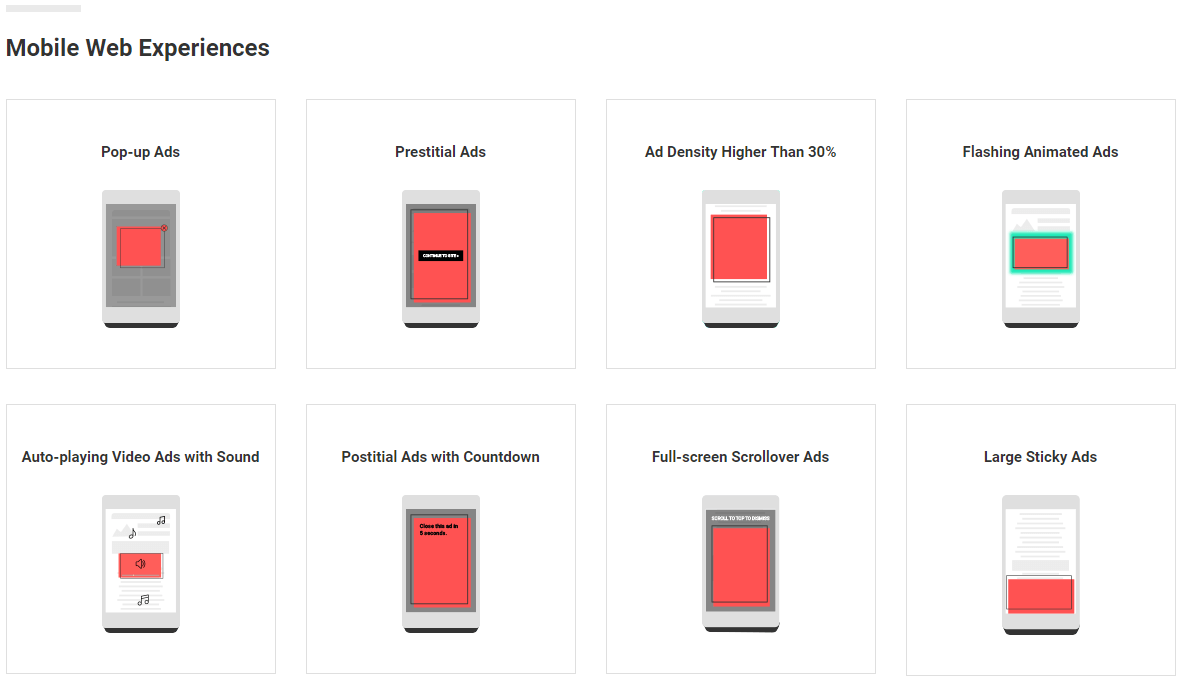
Google’s CEO Larry Page has been announcing for years that they need to do a better job at blocking intrusive ads. Recently Google has announced they will release a native ad-blocker in early 2018. With the development of their own ad-blocker this will give Google more power to filter out known ad’s that cause page issues.
The new Google ad-blocker is going to block known ad’s that have caused issues in the past but still let standardized ad’s by Google to be utilized. Google’s native ad-blocker sounds like less of an ad-blocker and more of an ad-filter. The reason behind this is because third party ad-blockers usually blocks all ads as a blanket action. While Google ad-blocker is only filtering ad’s that do not meet their standards. So most page friendly ad’s will be unaffected. This is the reason why it is more of an ad-filter than an ad-blocker.
Intrusive Desktop & Mobile Ad Examples


Google will have more power over how websites advertise and monetize their traffic. This will also give Google more control to improve page speed across the entire web. Google also announced it will be releasing a tool to check if your ad’s violate the ad standards. The “Ad Standards” are determined by a coalition of companies which include Google, Facebook, News Corp, and The Washington Post. This group of companies is dubbed the “Coalition for Better Ads”.
“Coalition for Better Ads” is targeting ad’s such as:
Desktop Web Experiences
- Pop-up Ads
- Auto-playing Video Ads with Sound
- Prestitial Ads with Countdown
- Large Sticky Ads
Mobile Web Experiences
- Pop-up Ads
- Prestitial Ads
- Ad Density Higher Than 30%
- Flashing Animated Ads
- Auto-playing Cideo Ads with Sound
- Postitial Ads with Countdown
- Full-screen Scrollover Ads
- Large Sticky Ads
Google’s Ad-blocker PROS
Google will be able to block known ads that link to malware and be able to protect its users from being infected or spreading the virus. This will ultimately make the web a safer place to click around in. Other intrusive ads slow down page load and make the sites harder to browse. These are reasons why users tend to install a third party ad-blocker that remove all advertisements. Google has known for a while that there is a increasing need for standardized ad’s.
When people use third party ad-blockers to view articles the publisher of the article gains little to zero value for you viewing the article. Publishers HATE ad-blockers. Specially when they count on ads to keep their site or company from going under. Google ad-blocker will target ad’s that do not pass their standards which will usually be the worst type of ad’s and replace them with web friendly ad’s. This will fix and speed up a lot of issue on the web today. Google knows that the common third party ad-blockers of today cannot be prominent on the web of the future.
Google’s Ad-blocker CONS
Google Chrome is used by over 70% of the entire world. This lets Google take the executive action to make the Google ad-blocker a standard. Google and the “Coalition for Better Ads” will have all the control over setting the ad’s standards for the entire web. Some think this is a horrible idea allowing a select few corporations to select the standards and guidelines for the entire web.
Google could and will have the power to block third-party ads, replace them with its own ads, and offer sites a share of the resulting revenue. Publishers are likely to make less since they cannot use the bulky and annoying ads that generate them the most revenue which they are use to. Some publishers and most ad networks don’t like this or where it is headed. Since Google is forcing this on the web and the publishers really have no other option but to comply and conform.
Link to the Coalition for Better Ads Standards
